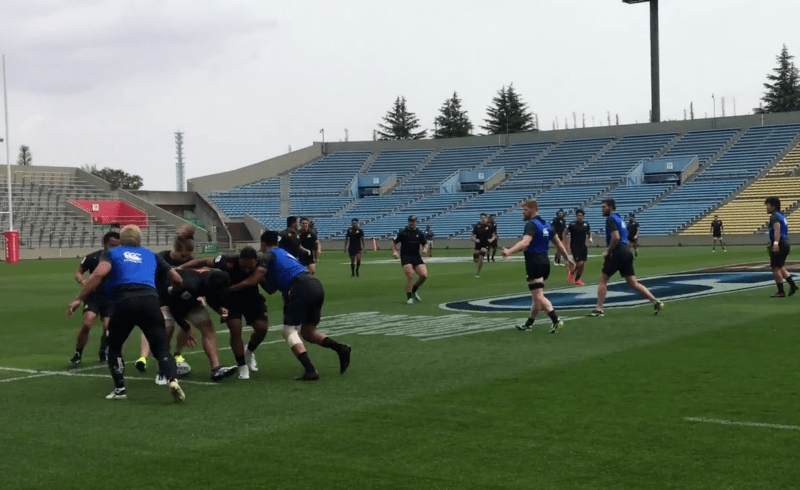Match ready in 30 minutes - Pre match sessions
Warm-Upsby Dan Cottrell

Don’t forget the team is more than the 15 starting players and you should include the substitutes in as much of the organisation as possible. After all, they could be called upon in the first minute of the match.
Do, do, do session
This is a "do, do, do" session, so feedback needs to be snappy and problems resolved quickly or parked for another time. Before you start, write up a "must do" list and then keep to it. The list should involve:
- Set pieces.
- Kick-offs.
- Patterns of play.
- Defence.
Set piece
The set piece is the one area you shouldn’t mind overrunning in time because it is a key part of the game. If you can’t win your own set piece then you are going to struggle to win the game. It is also a strategic area that requires the most organisation.
Spend about 10 minutes on set pieces. Send the openside flanker off to work with the backs during the set piece session, unless he is a key jumper in the lineout. The scrum half should stay with the forwards.
Scrums
Forget the scrum machine (even if you have one). It requires setting up, might mean moving away from the training pitch and needs time for a proper physical preparation.
Set up a scrum, with binding. A stable scrum should be able to stand in a balanced position without opposition. Have the players break, run to different parts of the pitch and return, making sure the pack binds together quickly and efficiently.
Don’t run the back row moves now. Wait until you have the backs with you.
Lineouts
Next, run through each lineout call twice, or four times if you want to check your catch and drive options, or passing off the top straight to the scrum half.
If a lineout play doesn’t work at least once, perhaps it is not worth doing in the match. You can always revise them in the pre-match warm-up. Don’t forget to practise the defensive lineout.
Backs moves
In the meantime, the backs need to work through their repertoire of moves. They do this with the openside flanker, so he can pick the breaking runner and you can run some second phase moves.
If possible, run moves from places on the pitch where they are likely to happen. The last few minutes with the backs should be spent working on kicking strategy, with the full back and wings retrieving the ball to work through their ccounter-attack strategy.
Kick-offs
Kick-off reception and kick-off chases are vital because they can set the tempo and shape of the game. Spend five minutes making sure your players are in the right positions and know what they will be doing.
Patterns of play and defence combined
With less than 15 minutes left, it is time to practise plays after the end of the set piece.
Split the team (or squad) in half, with 9 and 10 on the "attacking" team to start with. Then run a semi-opposed session, with tackle suits on the defenders if you have them.
The defence has to realign as per your defensive patterns. The attack run patterns from various points around the pitch. Swap around the defence and attack, with some new 9 and 10 combinations. This is important because a player in a key position might get injured at any stage of the match.
With about five minutes left of the combined session, run the starting team together. Whether you have spare players or not, it is important to run some moves off set pieces.
Newsletter Sign Up
Coaches Testimonials

Gerald Kearney, Downtown Las Vegas Soccer Club

Paul Butler, Florida, USA

Rick Shields, Springboro, USA

Tony Green, Pierrefonds Titans, Quebec, Canada
Subscribe Today
Be a more effective, more successful rugby coach
In a recent survey 89% of subscribers said Rugby Coach Weekly makes them more confident, 91% said Rugby Coach Weekly makes them a more effective coach and 93% said Rugby Coach Weekly makes them more inspired.
Get Weekly Inspiration
All the latest techniques and approaches
Rugby Coach Weekly offers proven and easy to use rugby drills, coaching sessions, practice plans, small-sided games, warm-ups, training tips and advice.
We've been at the cutting edge of rugby coaching since we launched in 2005, creating resources for the grassroots youth coach, following best practice from around the world and insights from the professional game.













